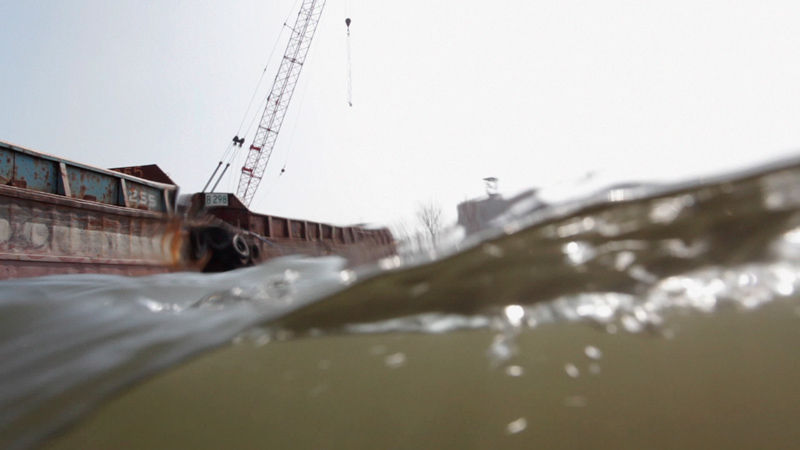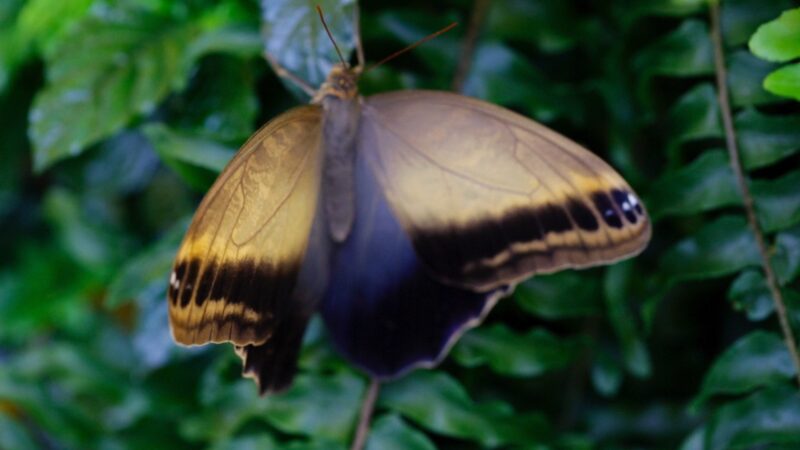[Summer 2021]
(D)énoncer
By Jean De Julio-Paquin
Plein sud, centre d’exposition en art actuel, Longueuil
12.09.2020 — 27.02.2021
Salle Alfred-Pellan de la Maison des arts de Laval
13.09.2020 — 7.03.2021
Galerie d’art Antoine-Sirois de l’Université de Sherbrooke
28.10.2020 — 13.03.2021
To begin with, the triple exhibition of work by multidisciplinary artist Isabelle Hayeur, (D)énoncer, was one of the high points of the autumn 2020 visual arts season. It was, of course, a season thrown off-kilter by the pandemic, marked by lockdowns that directly hit the arts and culture sector. The announcement that museums and exhibition venues would reopen, received with relief, also made it possible to extend the three exhibitions.
An ambitious project, (D)énoncer features more than seventy large-format photographs and six videos, as well as an interactive digital platform and an imposing monograph. To define the extent of Hayeur’s work, the curator, Mona Hakim, drew on her iconography to assign a distinct theme to each venue. The three themes – water, territory, and social engagement – bring together a body of work as a function of particular environmental issues. Through all of the themes, one constant remains: bearing witness to the degradation of ecosystems and its repercussions on the social fabric, and on us.
Hayeur, an engaged artist, records facts and speaks out on the deterioration of the physical world. In this sense, the title (D)énoncer, proposed by Hakim, proves to be an interesting way to encapsulate the essence of Hayeur’s approach in a single word by revealing, in a dialectic relationship, the fractures between an ideal world and the real world. Let’s take the example of the photographic series Underworlds (2008–) and the video Adrift (2019) at Centre d’exposition Plein sud, the instigator of the (D)énoncer project. In often fascinating views, underwater flora infiltrates a eutrophic (oxygen-deprived) environment. The visual attraction of certain scenes contrasts with the degrading conditions in which the plants live: polluted water in which moribund aquatic specimens and carcasses of ancient ships are imprisoned. The images, fixed or in motion, show an inexorably weakening biodiversity, in both maritime and terrestrial environments.
With the theme of territory, Salle Alfred-Pellan offers several photographic series, this time of vacant lots, industrial hinterlands, and human habitats. Among them, the series Desert Shores (2015–16) stands out for the strength of its vision. Travelling to a former seaside resort in southern California, Hayeur records the impacts of an ecological disaster: abandoned houses, decrepit lots, drained inland sea; signs advertising the location’s erstwhile charm and encouraging vacationers to come for a stay. In a sad twist of fate, it is now the antithesis of the American dream and commercial discourse – the implacable observation revealed in the photographs.
The third section of the exhibition, at Galerie d’art Antoine-Sirois, presents portraits of ecologists and documents related to citizen involvement in environmental struggles. The images highlight Hayeur’s concern with documenting the undertakings of activist groups with which she shares concerns. This production is not complementary to her more experimental work but takes intrinsically into account her valuing of the efforts of individuals and communities in their aspiration to make a better world. Whether she is photographing the Le Camp de la Rivière occupation in the Gaspé peninsula, activists decrying the risks of hydrocarbon exploration, or the actions of the group Citoyens sous haute tension in the Lanaudière region who are opposed to the erection of electric transmission towers on agricultural land, Hayeur documents the daily life of people who are struggling and participates in the discussions and events that they initiate. This type of engagement is based on the concept of infrapolitics, a term invented by American anthropologist John Scott to designate discreet forms of resistance. It is a strategy played out on a small scale, far from major uprisings, and amounts to a tactical choice to grab gains, as small as they might be, from an all-powerful adversary.
Although many of her works depicting despoiled sites may seem spectacular, Hayeur’s quest is not to find beauty or magnificence in devastation, but simply to capture the ambivalence of our relationship with the material world and with life. Her singular production falls within the current of an international Anthropocene movement that includes a variety of photographers, including the late American photographers Lewis Baltz and Allan Sekula and Canadian photographer Edward Burtynsky.
I must emphasize the museum-worthy quality of the exhibitions, the result of a fertile collaboration between a university gallery, a municipal gallery, and an exhibition centre. Given the constraints of distance, the presentation of works in three different locations represents a challenge for visitors. The use of the digital platform mitigates this difficulty by offering, among other things, images displayed in each exhibition site. Without the involvement and collaboration of the three institutions, this large-scale inter-regional event could never have happened. The pooling of resources and expertise was decisive in the creation of a major art event, with considerable social and political scope. Translated by Käthe Roth
Jean De Julio-Paquin is an art historian, critic, and exhibition curator. He regularly writes articles on current events in visual arts for the magazines Formes and Vie des Arts, for which he is a member of the editorial committee. As a curator, he organized Regards critiques et nouvelle photographie, in 2018, and L’Autre Amérique, two exhibitions at Maison de la culture Claude-Léveillée, in 2020.
[ See the magazine for the complete article and more images : Ciel variable 117 – SHIFTED ]



